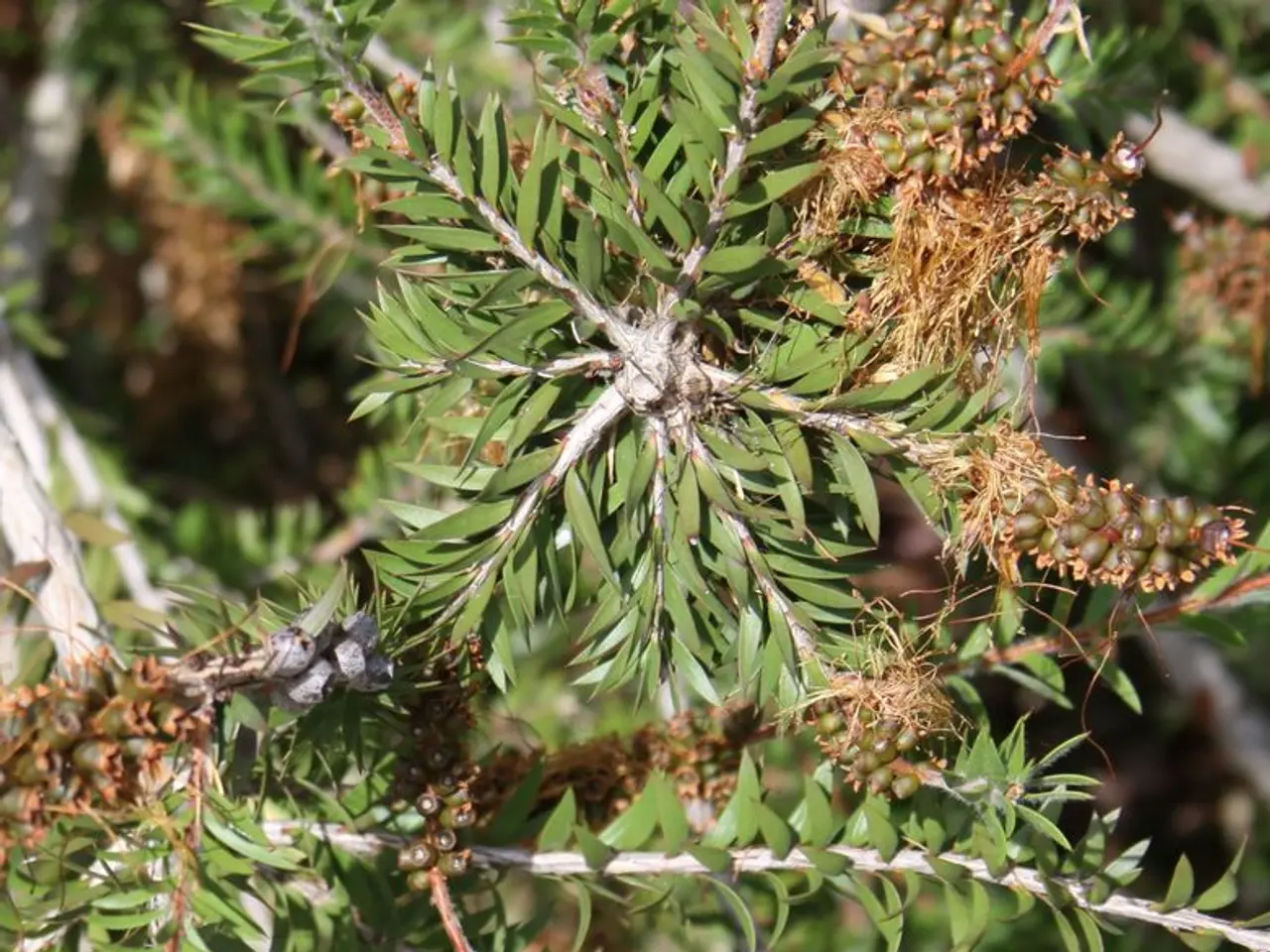Choosing and Maintaining Fruit Trees for Newcomers in Permaculture
In the realm of sustainable gardening, fruit trees play a significant role, forming diverse "food forest" ecosystems. Here's a guide on how to grow, care for, and preserve fruit in a permaculture orchard.
Canning, freezing, and dehydrating are excellent methods for preserving the fresh flavours of your homegrown fruit throughout the year. Canning is a time-honoured technique for keeping apples, pears, and plums for a long time, involving heating the fruit in jars to kill bacteria and seal them airtight. Dehydrating turns fruit into tasty, long-lasting snacks, drying sliced apples and pears in a dehydrator or oven. Freezing is perfect for maintaining the taste and texture of your fruit fresh, just wash, slice, and freeze plums or other soft fruits for later.
Choosing the right fruit trees is essential for a successful permaculture system. Factors to consider include climate suitability, space requirements, disease resistance, and yield potential. Popular fruit tree varieties for permaculture include disease-resistant apples, hardy pear cultivars, plums and cherries, and dwarf and semi-dwarf trees.
Planting a fruit tree in spring is best, and preparing the planting site with good drainage and compost is important. Compost is crucial in urban areas, using one cubic foot per three feet of tree height for best growth. Worm castings or worm castings tea can be used to add microbes, adding about 5% worm castings to the soil.
Correct watering is key for fruit tree health, watering about 10 gallons per 1 inch of trunk diameter per week. For young trees, focus on the central leader system and primary branches when pruning and training. Proper pruning and training are essential for fruit trees to shape the tree, improve airflow and sunlight, focus the tree's energy on fruit, and keep the tree manageable.
Promote healthy soil with compost and mulch to strengthen the disease resistance of your fruit trees. Choosing disease-resistant fruit tree cultivars and pruning for air circulation can help prevent disease. Use organic pest control methods like soapy water sprays, garlic oil, and neem extract to target specific pests.
Implement Integrated Pest Management (IPM) techniques, such as monitoring for pests and establishing action thresholds before intervention. Attract beneficial insects like ladybugs, lacewings, and hoverflies by planting a diverse polyculture of flowers and herbs. Fruit tree guilds are ideal for urban or limited area cultivation, making up 70% of guilds.
A fruit tree guild helps create a mini ecosystem, leading to a healthy, low-maintenance orchard. A fruit tree guild is a permaculture method that mixes plants like edibles, medicinal herbs, and flowers around a fruit tree. Recommended plant combinations for a permaculture-based fruit tree guild to achieve high biodiversity include diverse wild shrubs, berry bushes, vegetables, and flowering plants that attract beneficial insects.
Fruit tree guilds boost biodiversity, make a resilient system, need little care, and increase yields. They also contribute to carbon storage, biodiversity, and require little care, making them key to a sustainable future. For those new to permaculture, starting a fruit tree guild is a great way to grow a low-maintenance orchard.
Preserving the fruit from your permaculture orchard is a rewarding way to make the most of your harvest and enjoy the flavors of the season all year round. Preserving fruit can help avoid waste and provide fresh, homegrown food. By following these guidelines, you can create a thriving permaculture orchard and enjoy the fruits of your labour for months to come.
Read also:
- Struggle for Wetlands, Wildlife Preservation, and Youth-Driven Conservation Movement Led by Matthew Vincent Tabilog in the Philippines
- Weekly proceedings in the German Federal Parliament (Bundestag)
- Upgraded Delights: A Comparison of Overcooked and Overcooked 2, Revealing 3 Enticing Enhancements Worth the Excitement
- Family vacation deals in the Mediterranean: inclusions of children-free vacations and enticing destinations like Crete, Sicily, and Barcelona






